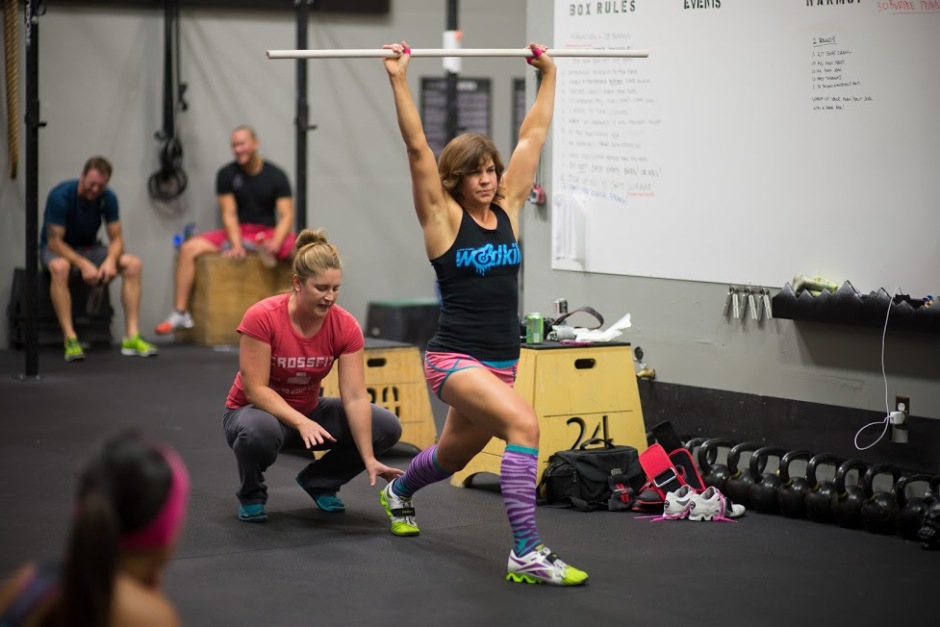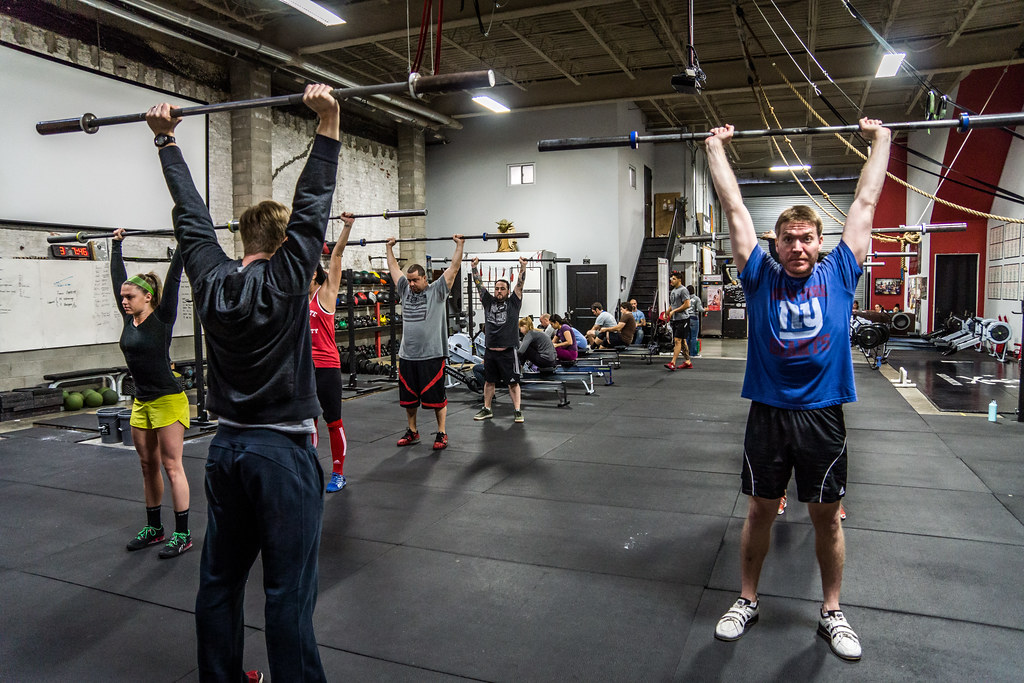
As 2014 has passed and everyone starts planning the 2015 version of themselves, an inevitable first step for many is researching and purchasing a gym membership. Whenever curious friends or family ask me how much my gym costs, their typical response is surprise at our $230* a month price tag. (*This is somewhat higher than typical CrossFit gym membership rates due to inflated NYC real estate costs.) The next question is invariably, "Why are CrossFit gyms so much more expensive than regular gyms?"—which is a valid question if you’re comparing CrossFit affiliates to whatever’s considered standard for a “gym membership.” But the answer to that question requires assessing what you’re actually paying for—and the fact that while there are many similarities (a gym is, after all, mainly just a place where you work out), the range of services and support you get will vary greatly, and may ultimately determine whether you’re back to binge watching New Girl on Netflix instead of showing up to the gym on February 1.
In this article, we’ll discuss how the prices of traditional gyms versus CrossFit affiliates are set in the first place, and evaluate what’s included in any either membership using three straightforward criteria: facilities, training services, and atmosphere. We’ll inevitably have to make some generalizations and of course, I am openly attempting to build the case for the merits of CrossFit gyms, but by answering this question, I hope you’ll be able to better evaluate what’s important to you when choosing a gym and what you’re actually paying for.
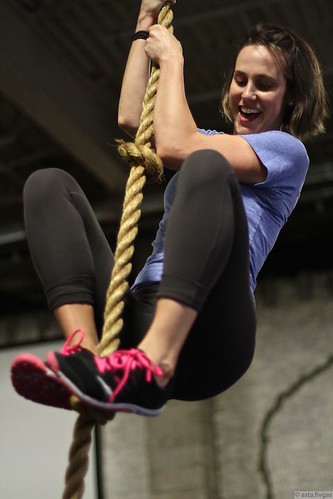 Setting the Price
Setting the Price
Before we get down to assessing what you're paying for, it's important to understand how the prices of any given gym are established. In general, all large commercial gyms (think Bally’s, Equinox, Planet Fitness, etc.) operate on a pre-enrollment membership model, which means that members sign a contract for usually no less than a one-year commitment plus enrollment fees at sign up. This set-up plays to the "rationally minded" consumer making assumptions about their behavior and motivation levels upwards of a year in advance, and allows the gym to assume reliable passive income for the next 12 months, regardless of the activity or success of the member.
We all know the punch line to this joke: An average of 67% of people enrolled don't actually ever show up. NPR's Planet Money recently took a great look at why people pay for gym memberships, but don't use them. If these people did show up, gyms would have to increase their footprints and consequently, the price tag for even the most basic commercial gyms would be far higher. In effect, gyms are able to drastically discount their rates for the handful of people that come to workout. Let me be clear: the typical range of dues from +/- $50-$150 per month you see at these places is NOT an accurate reflection of the income per active member the gym needs to keep its lights on; it's that the silent majority of those who don’t show up subsidizes the memberships of those who do.
This pre-enrollment membership model skews the perception of what it actually costs to run a gym, as its largley based on passive income—which, of course, can work out quite well for everyone who actually shows up. If you’re part of that group, don’t feel you require additional help with a training regimen, and you aren’t worried about getting feedback on your movement, then this is a win/win for you. But from the perspective of a business owner, this is not at all the way I’d want to run my business.
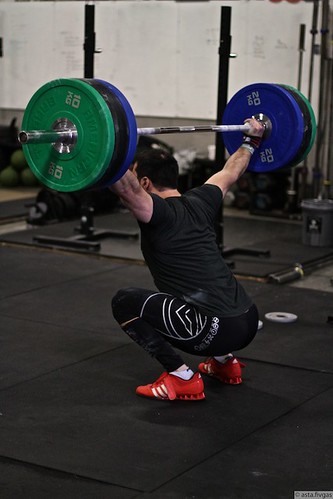 CrossFit affiliates and other specialized instruction-based gyms (SoulCycle, Barry’s Boot Camp etc.) primarily rely on the people who show up to pay their bills. Therefore, these gyms must account for what becomes a much smaller carrying capacity by charging a higher rate and actually delivering an experience that warrants the price tag. These kinds of gyms invariably require more space and equipment per person, as well as a dedicated staff of instructors to make the whole thing work. A significant percentage of people who train at CrossFit affiliates came through our doors because they felt like their traditional gym didn’t give them enough. They would rather pool together with other people for a cost that’s higher than traditional gym dues but less than personal training and that provides directed feedback and support.
CrossFit affiliates and other specialized instruction-based gyms (SoulCycle, Barry’s Boot Camp etc.) primarily rely on the people who show up to pay their bills. Therefore, these gyms must account for what becomes a much smaller carrying capacity by charging a higher rate and actually delivering an experience that warrants the price tag. These kinds of gyms invariably require more space and equipment per person, as well as a dedicated staff of instructors to make the whole thing work. A significant percentage of people who train at CrossFit affiliates came through our doors because they felt like their traditional gym didn’t give them enough. They would rather pool together with other people for a cost that’s higher than traditional gym dues but less than personal training and that provides directed feedback and support.
The economic take-home of this is that if you’re going to base your business on people who actually show up, and you’re going to pay a staff to teach everyone what to do every day, this whole thing is pretty damned expensive to run. As an example, my gym's expenses in 2014 were over a million dollars.
It’s also worth noting that affiliates only pay CrossFit Inc. an flat annual licensing fee ranging from $500-$3000 per year (determined by when you started), which, compared to franchising models, is comically cheap. This is intentional on CrossFit’s part. The idea is that we’re able to reinvest into our families, coaches, and the business itself instead of lining the pockets of CrossFit Headquarters. This benefits consumers, since we get to support the people with which we’re working directly. The benefit for affiliates is that as we grow, we’re able to do crazy things like subsidize health insurance for our employees and pay livable wages. For outsiders to the fitness industry, one might even call this model “progressive.”
Three Points of Criteria
Now that we understand how the prices of gyms are set in general, let’s also assess what you're paying for, which requires asking the right questions. Let’s start by breaking down the three criteria I mentioned in the beginning. This list will help you walk through what is and is not important to you when ponying up the cash to join a gym.
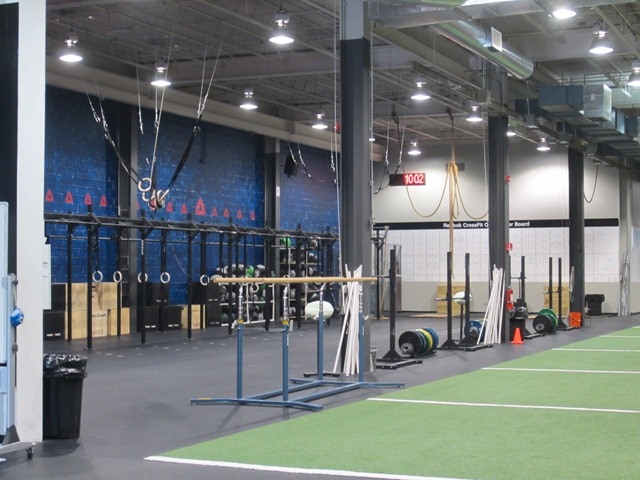 Criteria 1: Facilities and Equipment
Criteria 1: Facilities and Equipment
What's inside the gym? This encompasses everything from the equipment, layout, and amenities like showers, childcare, and parking.
Traditional or Commercial Gyms
Most traditional or commercial gyms are going to have your standard sea of treadmills and cardio equipment, a full set of pin selectorized Nautilus-style machines, and then a smaller portion of the gym reserved for free weights and hopefully a place to stretch out. Often the layout is organized to get as many people running in place as possible since those members don’t require a lot of real estate and the equipment doesn’t require someone to teach you what to do. The goal is to fill the gym with lots of low-skill equipment so people can mostly figure out for themselves how to press the Start button or push the lever away from their chest. That being said, there are exceptions to everything and the place near you might have everything you could ever want to use or do. Based on the chain, there might be additional amenities such as showers, a pool, and childcare, which may play a major factor in your decision.
CrossFit Affiliates
Often the more specialized or serious your training, the more likely you’ll need a gym that caters to those needs. I've known many powerlifters, weightlifters, and CrossFitters who left behind saunas, locker rooms, and eucalyptus-scented hot towels for somewhere that had chalk, quality barbells, and the ability to “drop bumps” (i.e., bailing a barbell). At CrossFit affiliates, we start with the stripped necessities for our strength and conditioning programs, and build out from there. This means we actually have a program that the majority of our membership follows (more on this below), and we emphasize the actual workouts over everything else. Much of our equipment, such as bumper plates and climbing ropes, are simply not found in traditional gyms and we actually encourage you to use and (reasonably!) abuse the equipment.
It’s worth noting that since 2007, I’ve seen a slow but steady increase in standards for facilities and amenities in CrossFit affiliates (take CrossFit Solace in Manhattan, for example), which I see as a positive evolution for market options.
These services include programming tailored for your abilities as well as regular movement education and feedback. Put simply, is anyone telling you what to do and how to do it?
Traditional or Commercial Gyms
As mentioned above, what you get with a traditional gym membership is access to the facilities, and you pay extra for specific programming and movement correction in the form of personal training. (Allow me to point out that gym dues plus a trainer skyrockets the cost to something that would make your CrossFit membership seem like chump change.) If you’re someone who is motivated enough to create an effective training program and monitor your own movement and progress, then a traditional gym might be just fine for you. But one of the major reasons so many people don’t show up in the first place is because they don’t know what to do when they get there.
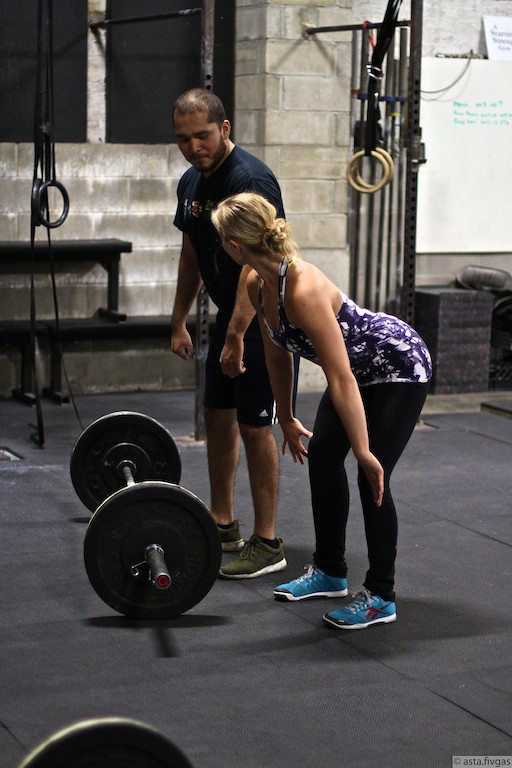 Aerobics-style and spinning classes are often a major draw at traditional gyms, which technically qualify as training services. But there are inherent limitations to these classes. Generally speaking, the gym at large or the particular trainer will pick one simple piece of equipment (Bosu balls) or a body part (abs) and then fill 20 to 60 minutes with techno music, cheerleading, and lots of synchronized arm waving and kicking. This may be better than what you’re doing already (e.g, sitting on the couch or strolling on an elliptical machine), and if you enjoy these classes and get what you want out of them, I encourage you to keep going. But consider the difference between exercise and training, which may cause you to evaluate their efficacy.
Aerobics-style and spinning classes are often a major draw at traditional gyms, which technically qualify as training services. But there are inherent limitations to these classes. Generally speaking, the gym at large or the particular trainer will pick one simple piece of equipment (Bosu balls) or a body part (abs) and then fill 20 to 60 minutes with techno music, cheerleading, and lots of synchronized arm waving and kicking. This may be better than what you’re doing already (e.g, sitting on the couch or strolling on an elliptical machine), and if you enjoy these classes and get what you want out of them, I encourage you to keep going. But consider the difference between exercise and training, which may cause you to evaluate their efficacy.
CrossFit Affiliates
At a CrossFit gym, training services—both in regards to programming and movement instruction—are inherent in the cost of membership. A typical gym will generally follow the format of an appropriate warm-up followed by some sort of strength training and finish with a conditioning workout (what you’ve surely heard called a “WOD”). We’ve found that by providing a framework and exercise methodology, people want to show up.
But, as I mentioned above, each CrossFit gym is its own freestanding business, which means that each gym owner can put their own individual stamp on the program of CrossFit—but it also means that the quality and experience of training services will vary from gym to gym. This topic is fodder for another article, but the reality of navigating the entire fitness industry is that you need to be an informed and discerning consumer when it comes to choosing a gym or coach/trainer. While CrossFit has been criticized for quality control, I have yet to see an alternative worldwide fitness movement or chain gym business where all the coaches are considered completely safe, effective, and efficient. There are approximately 10,000 independently owned and operated CrossFit affiliates, and basic probability theory dictates that you’ll come across the normal distribution of quality. Some remarkable and some awful gyms populate the far ends of the spectrum, but the majority fall somewhere in the middle. It’s on you, as the consumer, to shop around and ask the right questions.
 Criteria 3: Atmosphere
Criteria 3: Atmosphere
Last but not least, if you’ve met someone who loves their gym, I can guarantee that love is contingent on a great atmosphere. A gym you're excited to go to with people you enjoy being around will create a wildly more engaging and effective training experience than a gym to which you drag yourself because exercise is something you “should” be doing and that’s where all the treadmills are. While more intangible, the criteria of atmosphere is no less important than the other two and can make or break your experience anywhere.
Unlike traditional gyms, CrossFit gyms are a communitarian fitness experience—meaning that participants interact directly throughout large portions of class, which can and often does lead to meaningful and supportive relationships between people who might otherwise never have met. The social aspect gets people really excited to work out, eat healthy, and—unfortunately for the cousins and various friends of CrossFitters—post incessantly on social media about what they did at the gym that day. From my perspective, there are far worse things a person can spend their time and money on.
Conclusion
So are CrossFit affiliates expensive? Well, the answer is... maybe. It depends on your personal priorities as well as your budget and disposable income. CrossFit affiliates certainly aren't “cheap,” but for so many people across the world, obviously worth it. Take a moment to assess your current situation using the three criteria above and see how your facility stacks up.
Have a happy and healthy 2015, everyone!
